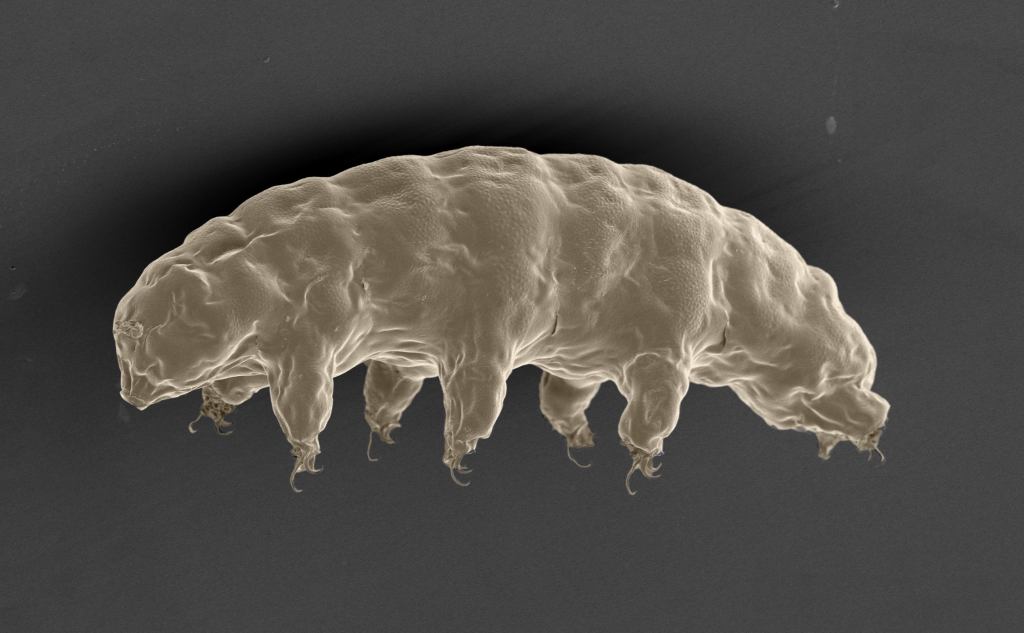


To survive in extreme conditions, tiny water bears have evolved proteins that bear little resemblance to those found in other animals. After sequencing the genome of a water bear species, scientists have identified a few genes and proteins that seem to contribute to their hardiness, including one that protected cultured human cells from harmful radiation.
This “suggests that unique proteins in the [water bears] confer exceptional tolerance to harsh environmental stresses,” wrote the researchers, who published their findings today in Nature Communications.
Water bears (also known as tardigrades and moss piglets) are microscopic, eight-legged invertebrates that live in or near water. There are more than 1,000 species of water bears, some of which have the ability to shrink down, dehydrate and pause nearly all metabolic activity when the going gets tough. While in this suspended animation-like state, tardigrades can withstand extreme heat or cold, intense pressure, irradiation, or even the vacuum of space. Desiccated water bears can survive for years in some cases, until they are revived with a drop of water.
To probe how water bears manage this feat, scientists have assembled the genomes of several species. After sequencing the genome of the freshwater tardigrade Hypsibius dujardini last year, researchers suggested that a whopping 17 percent of the animals’ genes were borrowed from plants, fungi, bacteria and other microbes. However, other scientists proposed that bacteria might have crept into and contaminated the water bear samples, and a later analysis suggested that a less surprising 1 to 2 percent of the tardigrades’ genes had been swapped in from other organisms.
For the new study, researchers in Japan sequenced the genome of Ramazzottius varieornatus, a water bear that can endure massive doses of radiation. They concluded that R. varieornatus only acquired 1.2 percent or fewer of its genes from other organisms. So it likely evolved its resilience without much contribution from foreign genes.
Compared with other animals, the water bears did have increases in certain types of genes that might lessen or repair damage incurred when the animals subject their bodies to dehydration.
The scientists also identified genes that coded for proteins only found in tardigrades. One of these proteins attaches to DNA and protects it from radiation damage. The scientists engineered cultures of human cells to produce this water bear protein and pummeled them with X-rays. Compared with normal human cells, the cells with water bear proteins suffered less broken DNA and were more likely to survive.
This “protein affords DNA protection without impairing cell viability and is quite suitable for future application to confer the tolerance to other animal cells,” concluded the researchers.
There may be more, as yet unnoticed genes that aid in its “exceptional” adaptations, the team added.
